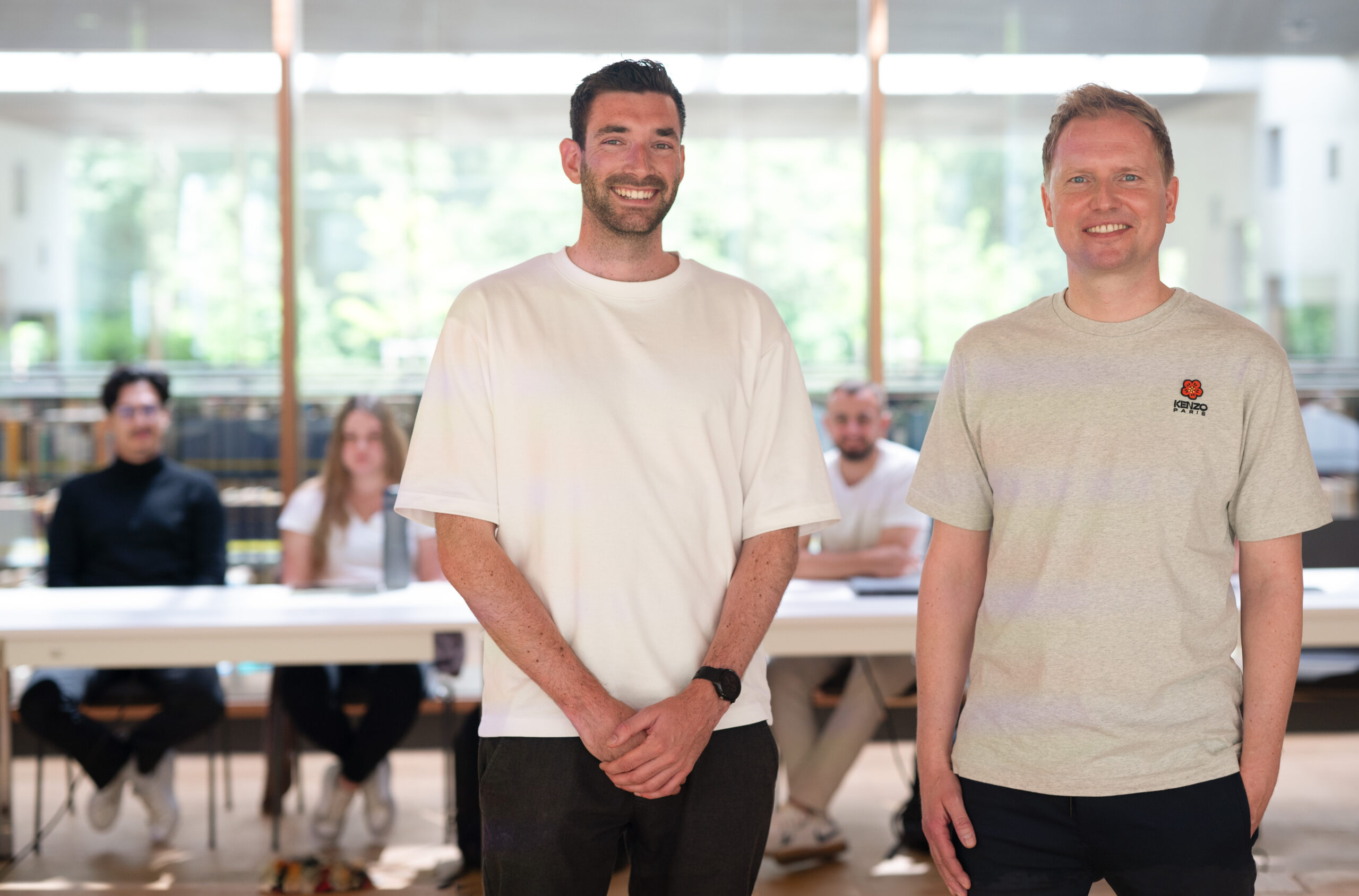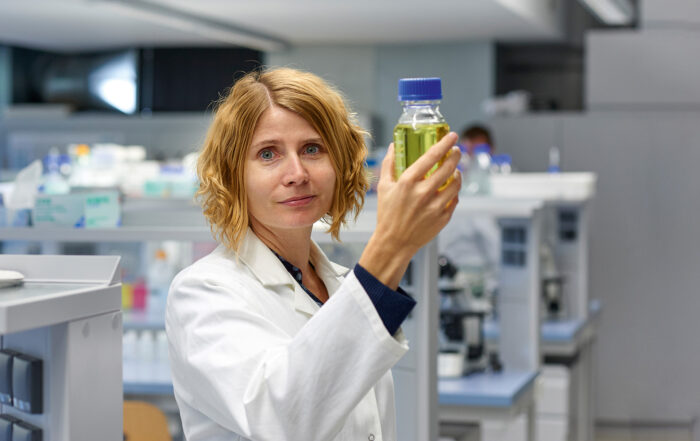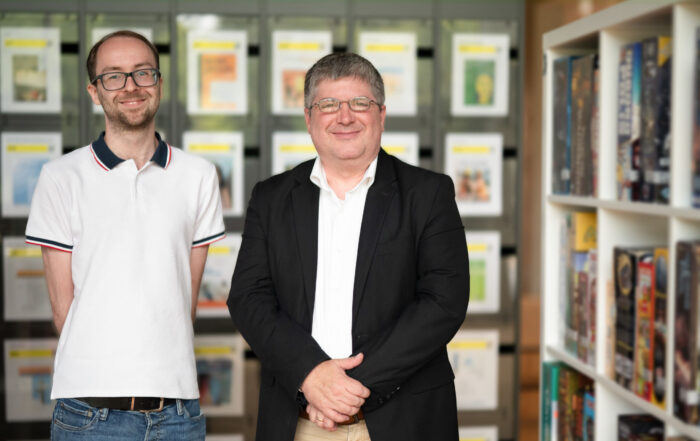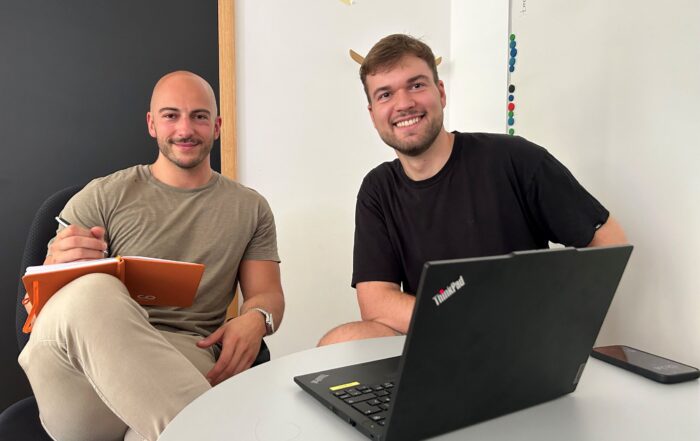12. June '24
From Natalie Schalk Converted set pieces, successful passes, ball possession: these things have been analyzed for a long time.
But in professional soccer today, data analysis and AI are used in all areas – from the search for new talent to live analysis during a match and merchandising.
Students on the Master’s degree course in Data Science at Coburg University of Applied Sciences are working on this together with two professionals from VfL Wolfsburg.
These professionals from the Bundesliga club are not players.
They are data specialists with a passion for ball sports. When Benjamin Hoppenz talks about VfL Wolfsburg’s “Data Lake”, he beams just as much as when he talks about great sporting successes.
Students on the Master’s degree course in Data Science at Coburg University of Applied Sciences regularly receive visits from practice partners who report on their everyday life in the world of data.
But this lecture shortly before the start of the European Football Championship is something special.
As Sports Coordinator, Hoppenz also heads the Sports Analytics Technology Lab, the department at VfL Wolfsburg that knows everything there is to know about data.
His colleague Lennart Wingerath comes from Scouting, the department that finds the right talent for the club – preferably before they are big stars.
“Tempo” as a key performance indicator of the central defender
The two employees of the Bundesliga club from Lower Saxony have come to Coburg in Franconia to explain how AI and data can help with this.
Hoppenz tells the students how the club discovered Micky van de Ven in this way, for example: “In terms of soccer, we had the approach of standing relatively high with the defense, i.e. relatively far away from our own goal.”
The Wolves therefore needed a central defender who was fairly quick.
Normally, the Dutch second division is not the first area they look in – but with the help of the data, they found a young player here who had exceptional values for the Key Performance Indicator (KPI) “pace”.
“There are many components to a transfer. Data is a big piece of the puzzle.”
But they are particularly helpful in the initial filtering process.
“Our philosophy is to bring in young players with development potential and develop them further,” says Hoppenz.
That worked very well for van de Ven.
He was signed for a manageable transfer fee and developed into one of the fastest players in the Bundesliga.
When the then 22-year-old moved to Tottenham Hotspur in 2023 after two years, the transfer fee amounted to up to €50 million according to media reports.
Software for data scouting by graduates of Coburg University of Applied Sciences
Soccer clubs use data analysis, but do not make the software for it.
VfL Wolfsburg, for example, works with products from Vebasoft, a company from Rödental near Coburg that offers web-based data analysis and organizational software in the sports sector – and was founded by a business administration and computer science graduatefrom Coburg University of Applied Sciences.
This is also how the contact with the university came about.
Now the students on the Master’s degree course in Data Science are eagerly listening to how AI and data are used not only in scouting, but also in medical rehabilitation, for example.
“Our data analysis department is located across all areas,” says Hoppenz.
![]() Men’s soccer, women’s soccer and the academy: each department has KPIs that are particularly important for its work.
Men’s soccer, women’s soccer and the academy: each department has KPIs that are particularly important for its work.
Benjamin Hoppenz
During match analysis, for example, the algorithms support the coaches in analyzing the teams, individual players and their playing style live.
“There’s a tablet on every coach’s bench. Behind it is a team that puts the data into context so that it helps the coaches make decisions.”
From AI with deep learning, machine learning and data mining to visualization and cloud computing
“Data analysis, data handling, artificial intelligence: the topic is everywhere these days,” says Prof. Dr. Thomas Wieland, who heads the Master’s degree course in Data Science at Coburg University of Applied Sciences.
The first step is often to set up data engineering, i.e. to bring together the data from the various sources, bundle it and make it available for analysis in the first place.
Artificial intelligence with deep learning, machine learning and data mining, as well as visualization and cloud computing, are all part of what his students learn.
In addition to the technical background and a high scientific level, the Master’s course also teaches students how to apply data analysis in practice.
The practical partners of Coburg University of Applied Sciences are crucial here.
“Some are interested in configuring fences online, others come from the insurance industry or energy supply – that makes a difference.”
In order to understand the problem in question, it is not only necessary to have access to the world of data – but also to the topic.
The Master’s in Data Science at Coburg University of Applied Sciences is therefore open to Bachelor’s graduates from various engineering disciplines, business administration or a natural science.
“It’s not the same whether I’m investigating a gearbox or changes in the running dynamics of a footballer,” says Wieland.
Every coach has their own tactics – and every club has a data strategy
There are many sources of data in soccer – and not every club uses them in the same way.
For example, clubs collect tracking data during a match, sometimes also biometric data such as heart rate and sweat concentrations with the help of special vests.
If you watch live matches on television, you can sometimes see this when changing shirts.
However, VfL Wolfsburg, for example, has decided to primarily use video data during the game.
The position of each player and the ball is tracked at every moment of a soccer match.
With video data from the German Football League (DFL), every movement in every stadium can be calculated very quickly.
Every coach has his own game tactics – and every club has its own data strategy.
“This has developed rapidly in recent years, both in terms of quantity and quality. Data quality has increased. The general data that is available has increased.”
They are a great help.
Hoppenz smiles: “But at the end of the day, there are 22 boys or girls on the pitch and that’s where the outcome of the game is decided.”
Podcast
Find out more about data strategy in soccer in the latest podcast from Coburg University of Applied Sciences with Benjamin Hoppenz from VfL Wolfsburg and Prof. Dr. Thomas Wieland from Coburg University of Applied Sciences.
And the two also reveal which teams they are betting on for the 2024 European Championship: Click here for the podcast on Spotify, YouTube, Apple Podcasts and Amazon.
You are currently viewing a placeholder content from YouTube. To access the actual content, click the button below. Please note that doing so will share data with third-party providers.






